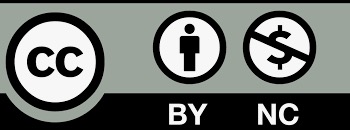Published
2025-03-21
Section
Research Articles
License
Copyright (c) 2025 Sasireakha Murugan, Shubashini Mathialagan, Amos En Zhe Lian

This work is licensed under a Creative Commons Attribution-NonCommercial 4.0 International License.
The journal adopts the Attribution-NonCommercial 4.0 International (CC BY-NC 4.0), which means that anyone can reuse and redistribute the materials for non-commercial purposes as long as you follow the license terms and the original source is properly cited.
Author(s) shall retain the copyright of their work and grant the Journal/Publisher rights for the first publication with the work concurrently licensed since 2023 Vol.8 No.2.
Under this license, author(s) will allow third parties to download, reuse, reprint, modify, distribute and/or copy the content under the condition that the authors are given credit. No permission is required from the authors or the publisher.
This broad license intends to facilitate free access, as well as the unrestricted use of original works of all types. This ensures that the published work is freely and openly available in perpetuity.
By providing open access, the following benefits are brought about:
- Higher Visibility, Availability and Citations-free and unlimited accessibility of the publication over the internet without any restrictions increases citation of the article.
- Ease of search-publications are easily searchable in search engines and indexing databases.
- Rapid Publication – accepted papers are immediately published online.
- Available for free download immediately after publication at https://esp.as-pub.com/index.php/ESP

Copyright Statement
1.The authors certify that the submitted manuscripts are original works, do not infringe the rights of others, are free from academic misconduct and confidentiality issues, and that there are no disputes over the authorship scheme of the collaborative articles. In case of infringement, academic misconduct and confidentiality issues, as well as disputes over the authorship scheme, all responsibilities will be borne by the authors.
2. The author agrees to grant the Editorial Office of Environment and Social Psychology a licence to use the reproduction right, distribution right, information network dissemination right, performance right, translation right, and compilation right of the submitted manuscript, including the work as a whole, as well as the diagrams, tables, abstracts, and any other parts that can be extracted from the work and used in accordance with the characteristics of the journal. The Editorial Board of Environment and Social Psychology has the right to use and sub-licence the above mentioned works for wide dissemination in print, electronic and online versions, and, in accordance with the characteristics of the periodical, for the period of legal protection of the property right of the copyright in the work, and for the territorial scope of the work throughout the world.
3. The authors are entitled to the copyright of their works under the relevant laws of Singapore, provided that they do not exercise their rights in a manner prejudicial to the interests of the Journal.
About Licence
Environment and Social Psychology is an open access journal and all published work is available under the Creative Commons Licence, Authors shall retain copyright of their work and grant the journal/publisher the right of first publication, and their work shall be licensed under the Attribution-NonCommercial 4.0 International (CC BY-NC 4.0).
Under this licence, the author grants permission to third parties to download, reuse, reprint, modify, distribute and/or copy the content with attribution to the author. No permission from the author or publisher is required.
This broad licence is intended to facilitate free access to and unrestricted use of original works of all kinds. This ensures that published works remain free and accessible in perpetuity. Submitted manuscripts, once accepted, are immediately available to the public and permanently accessible free of charge on the journal’s official website (https://esp.as-pub.com/index.php/ESP). Allowing users to read, download, copy, print, search for or link to the full text of the article, or use it for other legal purposes. However, the use of the work must retain the author's signature, be limited to non-commercial purposes, and not be interpretative.
Click to download <Agreement on the Licence for the Use of Copyright on Environmental and Social Psychology>.
How to Cite
Examining factors contributing to criminal behavior: A literature review and case report of a Malaysian ex-convict
Sasireakha Murugan
Faculty of Social Sciences, Raffles University, G-05, Medini 7, Jalan Medini Sentral 5, Bandar Medini Iskandar Malaysia, Iskandar Puteri, 79250 Johor Bahru, Johor, Malaysia
Shubashini Mathialagan
Faculty of Social Sciences, Raffles University, G-05, Medini 7, Jalan Medini Sentral 5, Bandar Medini Iskandar Malaysia, Iskandar Puteri, 79250 Johor Bahru, Johor, Malaysia
Amos En Zhe Lian
Faculty of Social Sciences, Raffles University, G-05, Medini 7, Jalan Medini Sentral 5, Bandar Medini Iskandar Malaysia, Iskandar Puteri, 79250 Johor Bahru, Johor, Malaysia. Kepha Institute, Columbia International University, 7435 Monticello Rd, Columbia, SC 29203, United States
DOI: https://doi.org/10.59429/esp.v10i3.3526
Keywords: case report; forensic psychology; ex-criminal; Malaysia
Abstract
Background of the study: To enhance crime prevention strategies and advance forensic psychology research in Malaysia, it is crucial to investigate the multifaceted factors contributing to criminal behaviour. Durrant's Level of Analysis and Explanation of Crime provides a robust framework for this purpose, categorizing these factors into six distinct perspectives: evolutionary, sociological, genetic, developmental, psychological, and situational. However, despite the alarmingly high crime rate in Malaysia, forensic psychology research here remains significantly understudied. To the best of the author's knowledge, no existing research has investigated the factors contributing to crime within Malaysia. Thus, the study's objective is to explore the factors contributing to criminal behaviour in Malaysia by applying Durrant's framework.
Methods: A single-case research design was employed, focusing on a Malaysian ex-convict. Analysis of the case study demonstrated the relevance of all six factors within Durrant's framework, supported by existing research.
Case Presentation: The present study recruited a young adult male ex-convict from a drug rehabilitation centre in Malaysia. He has a history of drug addiction and dealing, resulting in a charge under Section 39B of the Dangerous Drugs Act 1952. The participant served a two-year prison sentence.
Discussion: The current findings validate Durrant's Level of Analysis and Explanation of Crime as a valuable theoretical framework for understanding criminal behaviour. All factors considered—evolutionary, sociological, genetic, developmental, psychological, and situational—were relevant to the case study and supported by the results.
Conclusion: This study contributes to the literature by being among the first to utilize a case study approach to examine criminal behaviour in Malaysia. By applying Durrant's framework, the study demonstrates its potential for understanding criminal behaviour.
References
[1]. 1.Yao, Q. (2023). The relationship between childhood trauma and crime and its mechanism. Journal of Education Humanities and Social Sciences, 22, 651–655. https://doi.org/10.54097/ehss.v22i.13247
[2]. 2.Sowmyya, T. S. T. (2011). Crime: a Conceptual Understanding. Indian Journal of Applied Research, 4(3), 196–198. https://doi.org/10.15373/2249555x/mar2014/58
[3]. 3.Ishak, S., & Bani, N. Y. M. (2017). Determinants of crime in Malaysia: evidence from developed states. International Journal of Economics and Management, 11, 607–622. http://psasir.upm.edu.my/id/eprint/61418/
[4]. 4.Azizan, A. (2023, October 29). PDRM: Crime rates in M'sia drop by 1.1% as of June 2023 with 7 out of 10 cases solved - World of Buzz. World of Buzz. https://worldofbuzz.com/pdrm-crime-rates-in-msia-drop-by-1-1-as-of-june-2023-with-7-out-of-10-cases-solved/
[5]. 5.The Malaysian Insight. (2022, November 29). Malaysia’s crime index down by 19.3% in 2021. Themalaysianinsight.com; The Malaysian Insight. https://www.themalaysianinsight.com/s/414606
[6]. 6.Berk, R. (2022). Is Violent Crime Increasing? | Department of Criminology. Crim.sas.upenn.edu. https://crim.sas.upenn.edu/fact-check/violent-crime-increasing
[7]. 7.Noraini M. Noor. (2024, June 1). Multicultural Policies in Malaysia: Challenges, Successes, and the Future. Georgetown Journal of International Affairs. https://gjia.georgetown.edu/2024/06/01/multicultural-policies-in-malaysia-challenges-successes-and-the-future/
[8]. 8.Durrant, R. (2018). An Introduction to Criminal Psychology. Routledge, Taylor & Francis Group.
[9]. 9.Trivers, R. L. (2017). Parental investment and sexual selection. In Routledge eBooks (pp. 136–179). https://doi.org/10.4324/9781315129266-7
[10]. 10.Daly, M., & Wilson, M. (2017). Homicide. Routledge. https://doi.org/10.4324/9780203789872
[11]. 11.Buss, D. M. (1989). Sex differences in human mate preferences: Evolutionary hypotheses tested in 37 cultures. Behavioural and Brain Sciences, 12(1), 1–14. https://doi.org/10.1017/s0140525x00023992
[12]. 12.Thornhill, R. (1999). The scent of symmetry a human sex pheromone that signals fitness? Evolution and Human Behaviour, 20(3), 175–201. https://doi.org/10.1016/s1090-5138(99)00005-7
[13]. 13.Akers, R. L. (1973). Deviant behavior;: A social learning approach.
[14]. 14.Akers, R. L., & Jensen, G. F. (2010). Social Learning Theory: Process and structure in criminal and deviant behaviour. The SAGE Handbook of Criminological Theory, 56–71. https://doi.org/10.4135/9781446200926.n4
[15]. 15.Agnew, R., & Brezina, T. (2018). Juvenile delinquency: causes and control. New York ; Oxford Oxford University Press.
[16]. 16.Fergusson, D., Swain-Campbell, N., & Horwood, J. (2004). How does childhood economic disadvantage lead to crime? Journal of Child Psychology and Psychiatry, 45(5), 956–966. https://doi.org/10.1111/j.1469-7610.2004.t01-1-00288.x
[17]. 17.Lawrence, C. (2014). Psychological criminology: An integrative approach. Security Journal, 27(3), 344–345. https://doi.org/10.1057/sj.2012.19
[18]. 18.E. Moffitt, T. (2005). Genetic and environmental influences on antisocial behaviours: Evidence from behavioural–genetic research. Advances in Genetics, 55, 41–104. https://doi.org/10.1016/s0065-2660(05)55003-x
[19]. 19.E. Moffitt, T. (2005). Genetic and environmental influences on antisocial behaviours: Evidence from behavioural–genetic research. Advances in Genetics, 55, 41–104. https://doi.org/10.1016/s0065-2660(05)55003-x
[20]. 20.Raine, A. (2013). The Anatomy of Violence: the Biological Roots of Crime. Penguin Books.
[21]. 21.Mehta, P. H., & Prasad, S. (2015). The dual-hormone hypothesis: a brief review and future research agenda. Current Opinion in Behavioural Sciences, 3, 163–168. https://doi.org/10.1016/j.cobeha.2015.04.008
[22]. 22.Carré, J. M., & Olmstead, N. A. (2015). Social neuroendocrinology of human aggression: Examining the role of competition-induced testosterone dynamics. Neuroscience, 286, 171–186. https://doi.org/10.1016/j.neuroscience.2014.11.029
[23]. 23.Montez, M. (2024). The emotional toll of hormonal imbalance: From Sadness to Depression - R2 Medical Clinics. R2 Medical Clinics. https://doi.org/10809494706/54VqCP7H39ADELKZr6Io
[24]. 24.Silver, I., & Nedelec, J. L. (2018). The Anatomy of Violence: The Biological Roots of Crime. Journal of Criminal Justice Education, 30(1), 159–161. https://doi.org/10.1080/10511253.2018.1445334
[25]. 25.Loeber, R. (2012). Does the study of the age-crime curve have a future? In R. Loeber & B.C. Welsh (eds.), The Future of Criminology (pp. 11–19). Oxford: Oxford University Press.
[26]. 26.Decker, S. (2015). From juvenile delinquency to adult crime: Criminal careers, justice policy, and prevention. Contemporary Sociology: A Journal of Reviews, 45(1), 59–61. https://doi.org/10.1177/0094306115621526x
[27]. 27.Sweeten, G., Piquero, A. R., & Steinberg, L. (2013). Age and the explanation of crime, Revisited. Journal of Youth and Adolescence, 42(6), 921–938. https://doi.org/10.1007/s10964-013-9926-4
[28]. 28.Juby, H., & Farrington, D. (2001). Disentangling the link between disrupted families and delinquency : Sociodemography, Ethnicity and Risk Behaviours. British Journal of Criminology, 41(1), 22–40. https://doi.org/10.1093/bjc/41.1.22
[29]. 29.Beaver, K. M. (2012). The familial concentration and transmission of crime. Criminal Justice and Behaviour, 40(2), 139–155. https://doi.org/10.1177/0093854812449405
[30]. 30.Farrington, D. P., & Welsh, B. C. (2006). Saving Children from a Life of CrimeEarly Risk Factors and Effective Interventions. https://doi.org/10.1093/acprof:oso/9780195304091.001.0001
[31]. 31.Cáceres-Delpiano, J., & Giolito, E. (2012). The Impact of unilateral divorce on crime. Journal of Labor Economics, 30(1), 215–248. https://doi.org/10.1086/662137
[32]. 32.Boccio, C. M., & Beaver, K. M. (2017). The influence of family structure on delinquent behaviour. Youth Violence and Juvenile Justice, 17(1), 88–106. https://doi.org/10.1177/1541204017727836
[33]. 33.Gilbert, R., Widom, C. S., Browne, K., Fergusson, D., Webb, E., & Janson, S. (2009). Burden and consequences of child maltreatment in high-income countries. The Lancet, 373(9657), 68–81. https://doi.org/10.1016/s0140-6736(08)61706-7
[34]. 34.Kerig, P. K., & Becker, S. P. (2015, October 1). Early abuse and neglect as risk factors for the development of criminal and antisocial behaviour. https://doi.org/10.1007/978-3-319-08720-7_12,
[35]. 35.Widom, C. S. (2006 ). Child abuse, neglect, and violent criminal behaviour. Criminology, 27(2), 251–271. https://doi.org/10.1111/j.1745-9125.1989.tb01032.x
[36]. 36.Hoeve, M., Stams, G. J. J. M., van der Put, C. E., Dubas, J. S., van der Laan, P. H., & Gerris, J. R. M. (2012). A Meta-analysis of attachment to parents and delinquency. Journal of Abnormal Child Psychology, 40(5), 771–785. https://www.ncbi.nlm.nih.gov/pmc/articles/PMC3375078/
[37]. 37.Ray, A. (2015). the body keeps the score: Brain, mind, and body in the healing of trauma. The Permanente Journal, 19(3). https://doi.org/10.7812/tpp/14-211
[38]. 38.Paulhus, D. L., & Williams, K. M. (2002). The Dark Triad of personality: Narcissism, Machiavellianism, and Psychopathy. Journal of Research in Personality, 36(6), 556–563. https://doi.org/10.1016/s0092-6566(02)005056
[39]. 39.Buckels, E. E., Jones, D. N., & Paulhus, D. L. (2013). Behavioural confirmation of everyday sadism. Psychological Science, 24(11), 2201–2209. https://doi.org/10.1177/0956797613490749
[40]. 40.Lian, A. E. Z., Chooi, W.-T., & Bono, S. A. (2023). A narrative review investigating the Early Maladaptive Schemas (EMS) in individuals with trauma experiences and PTSD. European Journal of Trauma & Dissociation, 100315. https://doi.org/10.1016/j.ejtd.2023.100315
[41]. 41.Gilbert, F., & Daffern, M. (2013). The association between early maladaptive schema and personality disorder traits in an offender population. Psychology, Crime & Law, 19(10), 933-946.
[42]. 42.Stevenson-Hinde, J. (2017). Attachment theory and John Bowlby: Some reflections. Attachment & Human Development, 9(4), 337–342. https://doi.org/10.1080/14616730701711540
[43]. 43.Drescher, A. (2023, June 19). Disorganized Attachment Style: Traits and Ways to Cope - Simply Psychology. Simply Psychology . https://www.simplypsychology.org/disorganized-attachment.html
[44]. 44.Krauss, S., Orth, U., & Robins, R. W. (2020). Family environment and self-esteem development: A longitudinal study from age 10 to 16. Journal of Personality and Social Psychology, 119(2). https://doi.org/10.1037/pspp0000263
[45]. 45.Goldstein, A. P., & Netlibrary, I. (2002). The psychology of group aggression. J. Wiley.
[46]. 46.Wilcox, P., & Cullen, F. T. (2018). Situational Opportunity Theories of Crime. Annual Review of Criminology, 1(1), 123–148. https://doi.org/10.1146/annurev-criminol-032317-092421
[47]. 47.Felson, M., & Clarke, R. (1998). Opportunity Makes the Thief Practical theory for crime prevention. Undefined. https://www.semanticscholar.org/paper/Opportunity-Makes-the-
[48]. 48.Carlson, R. (1988). Exemplary lives: The uses of psychobiography for theory development. Journal of Personality, 56(1), 105–138. https://doi.org/10.1111/j.1467-6494.1988.tb00464.x
[49]. 49.Schultz, W. T., & Lawrence, S. (2017). Psychobiography: Theory and method. American Psychologist, 72(5), 434–445. https://doi.org/10.1037/amp0000130
[50]. 50.Hyett, N., Kenny, A., & Dickson-Swift, V. (2014). Methodology or method? A critical review of qualitative case study reports. International journal of qualitative studies on health and well-being, 9(1), 23606.







